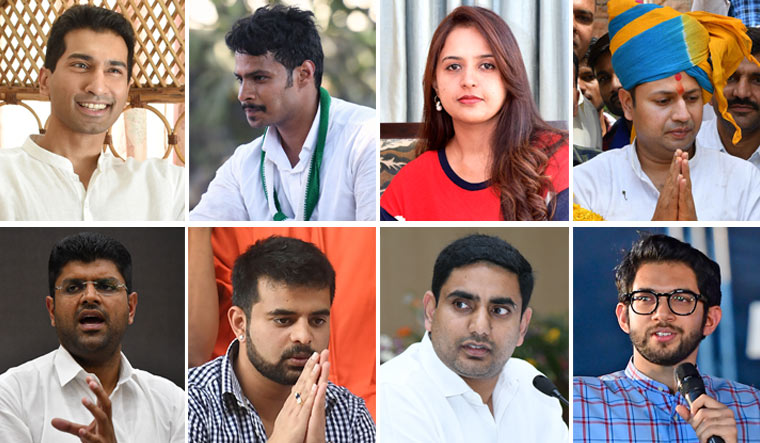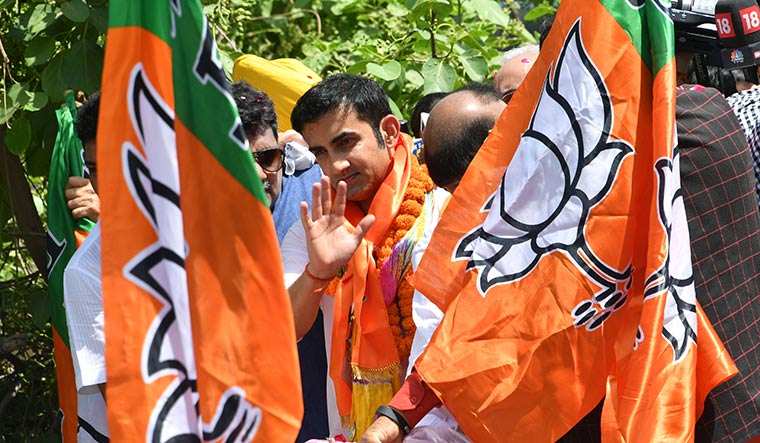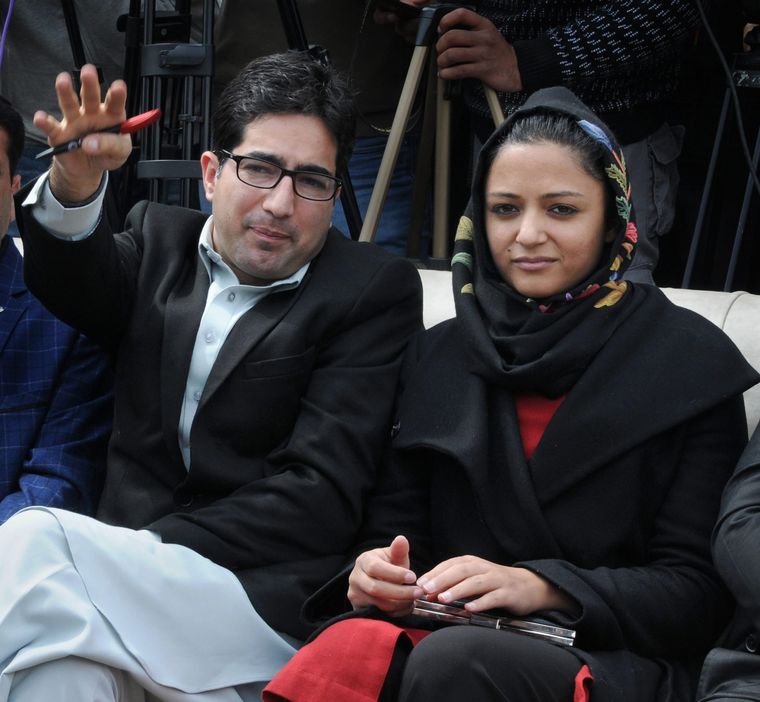In 1984, Somnath Chatterjee, a three-time Lok Sabha MP from Jadavpur, thought his fourth election would be a breeze. Unable to find a candidate willing to take on the 55-year-old CPI(M) leader in his bastion, the Congress fielded a 29-year-old youth wing member, Mamata Banerjee, on the recommendation of Pranab Mukherjee.
Banerjee went on to create a buzz around her campaign, and felled Chatterjee, winning the seat by 16,900 votes. That was the only election Chatterjee lost in the 11 Lok Sabha polls he contested (1971-2004). Banerjee, today the chief minister of West Bengal, was then the youngest Lok Sabha MP ever. Young guns come in handy when the challenge appears insurmountable.
In politics, age is sometimes just a number, or even relative. For the Congress, Rahul Gandhi, 48, represents the next generation—youthful and energetic. In December 2013, a rookie defeated three-time Delhi chief minister Sheila Dikshit. Overnight, 44-year-old Arvind Kejriwal became a sensation.
This Lok Sabha election, parties have sought out young and fresh faces to beat anti-incumbency or even infuse greater energy into the contest. In the BJP, all outgoing MPs above 75 years—including L.K. Advani, M.M. Joshi, B.C. Khanduri, Shanta Kumar and Kalraj Mishra—were cajoled into vacating their seats. Their exit coincided with the entry of many younger leaders into the party. Cricketer Gautam Gambhir, 37, who was priming himself with his ultranationalistic statements, joined the BJP and is its candidate from East Delhi. The BJP has also given tickets to some of the younger turncoats from the Trinamool in Bengal.
Banerjee’s Trinamool Congress, too, has roped in celebrity first-timers like Nusrat Jahan and Mimi Chakraborty to take on the challenge from the BJP, the Congress and the left. The Congress axed its Ernakulam MP K.V. Thomas, 72, and gave the ticket to MLA Hibi Eden, 35. Likewise, it chose Ramya Haridas, 32, for Alathur and Dean Kuriakose, 37, for Idukki, overlooking the claims of senior partymen.
Relying on younger candidates is no longer a strategic ploy, it has become a necessity, given the sheer number of first-time voters in every election. During the 2014 elections, the BJP polled 17 crore votes, while the Congress got more than 10 crore votes. Of the 90 crore voters registered this time, 8.4 crore are new voters. More than 1.5 crore are in the age group of 18-19 years. Though the enrolment of new voters is less this time, compared with 2014, parties are increasingly targeting young voters. They think the youth get easily swayed by rhetoric, hence the greater reliance on social media.
The analysis of the 2014 voting pattern showed that voters between 18 and 25 years turned out in large numbers compared with previous elections. This led to an increase in the voting percentage in the last elections, making it the highest ever at 66.38 per cent. The biggest beneficiary of this increased turnout was the BJP, as it won maximum seats in the areas where the polling percentage was higher. The RSS, therefore, is trying to ensure a 100 per cent voter turnout this year.
The Centre for the Study of Developing Societies (CSDS), in its post-poll surveys over past elections, found that the turnout of voters in the 18-25 years group was highest in 2014, at 68 per cent; it was 54 per cent in 2009 and 52 per cent in 2004. In previous elections, the vote share of young voters used to be 4 to 5 per cent less than the national average, but in 2014 it was higher. The BJP’s national vote share in 2014 was 31 per cent, but the vote share of young voters rooting for the saffron party was 34 per cent, noted the CSDS study. This clearly suggested that Modi’s innovative narrative and appeal to youngsters had paid dividends. Prof Sanjay Kumar of CSDS, however, said, “Young voters gave preference to Modi and the BJP in 2014, but this was not as pronounced in subsequent assembly elections.”
But, Union Minister of State Kiren Rijiju said that while the practical experience of the seniors cannot be discarded, the country’s success will depend on the youth. “We definitely need more young people in politics, more youth icons,” he said. “And, age may not have much to do with it. For example, look at our Prime Minister Narendra Modi. He is an icon for the youth. He is so youthful.”
The winds of change have been blowing in other parties, too. Bahujan Samaj Party chief Mayawati included her nephew Akash Anand, 24, in the list of star campaigners, thus setting off rumours that he would be her political heir. Akhilesh Yadav, too, has taken over the reins of the Samajwadi Party from his father, Mulayam Singh Yadav. In Maharashtra, Aditya Thackeray has been a constant fixture alongside his father, Shiv Sena chief Uddhav Thackeray, in political negotiations. Former Bihar chief minister Lalu Prasad’s younger son Tejashwi Yadav, has successfully taken over the mantle from his jailed father, as he negotiated with other parties for a grand alliance in Bihar.
In his book, India: A Portrait, Patrick French observed that most young MPs came from political families. And, it is a trend that could continue post this election, too, considering the many dynasts who are in the fray. Take, for instance, Nakul Nath, son of Madhya Pradesh Chief Minister Kamal Nath. He is contesting from his father’s constituency, Chhindwara. Down south, former prime minister H.D. Deve Gowda’s grandsons, Nikhil Kumaraswamy and Prajwal Revanna, are making their electoral debuts.
The BJP’s highhanded approach in imposing its version of ultranationalism has produced a new crop of young leaders. Former Jawaharlal Nehru University student leader Kanhaiya Kumar is the CPI candidate in Begusarai. “It is a fight between the fundamentalist ideology and youthful thinking. This is a fight between truth and falsehood,” said Kumar, about his contest with Union minister Giriraj Singh, who is known for his controversial ‘Go to Pakistan’ remarks. Kumar’s batchmate Shehla Rashid, too, has made her political entry. She joined hands with former bureaucrat Shah Faesal’s J&K People’s Movement Party.
Then, there are young influencers like Prashant Kishor and Shaurya Doval, son of National Security Adviser Ajit Doval, who are changing the way elections are fought. Kishor, through his election management skills, had spawned a whole army of professionals who are currently helping parties and candidates run campaigns. Shaurya, on the other hand, was supposed to contest from Pauri Garhwal in Uttarakhand, but the seat was given to seasoned politician, Tirath Singh Rawat. He, along with BJP’s national general secretary Ram Madhav, set up the India Foundation, an NGO that has been instrumental in creating a rightwing ecosystem in the country by engaging with writers, students and policy experts through a series of literature festivals, policy dialogues and back-room discussions on key issues. And, this ecosystem, a counter to the left-liberal space, has helped the BJP shape public opinion and win elections.
Kumar of CSDS, however, said that the number of young politicians contesting elections is small. “Only a few who have proved themselves like Hardik Patel or Kanhaiya are getting a ticket,” he said. “But those belonging to political families get first advantage in contesting elections as they claim their family legacy. In subsequent elections that advantage is gone.”
Electoral data suggests that merely being young does not necessarily attract young voters. So, young leaders, dynasts or otherwise, would need a little more than their age to be on the winning side.




